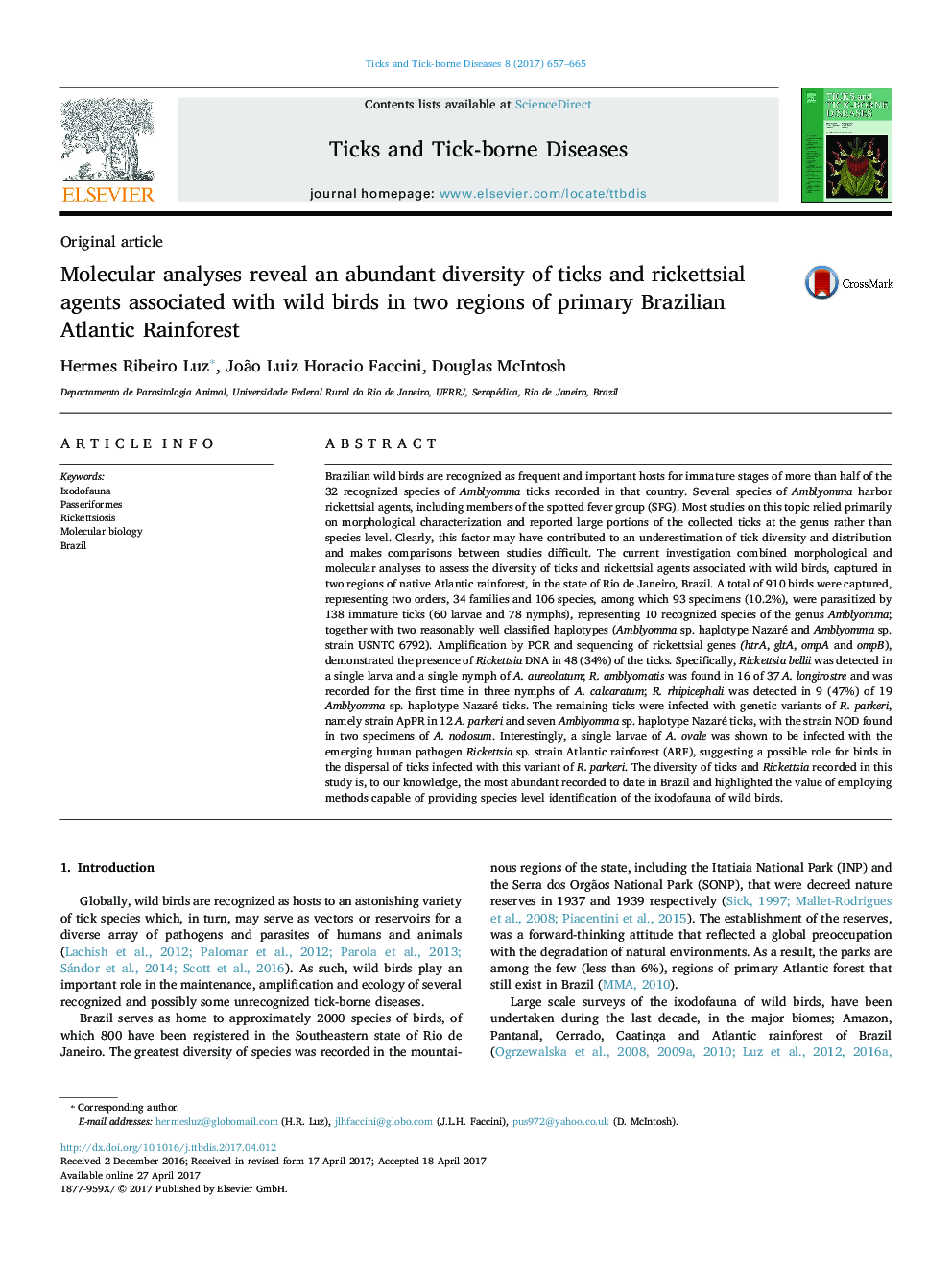| Article ID | Journal | Published Year | Pages | File Type |
|---|---|---|---|---|
| 5546320 | Ticks and Tick-borne Diseases | 2017 | 9 Pages |
Brazilian wild birds are recognized as frequent and important hosts for immature stages of more than half of the 32 recognized species of Amblyomma ticks recorded in that country. Several species of Amblyomma harbor rickettsial agents, including members of the spotted fever group (SFG). Most studies on this topic relied primarily on morphological characterization and reported large portions of the collected ticks at the genus rather than species level. Clearly, this factor may have contributed to an underestimation of tick diversity and distribution and makes comparisons between studies difficult. The current investigation combined morphological and molecular analyses to assess the diversity of ticks and rickettsial agents associated with wild birds, captured in two regions of native Atlantic rainforest, in the state of Rio de Janeiro, Brazil. A total of 910 birds were captured, representing two orders, 34 families and 106 species, among which 93 specimens (10.2%), were parasitized by 138 immature ticks (60 larvae and 78 nymphs), representing 10 recognized species of the genus Amblyomma; together with two reasonably well classified haplotypes (Amblyomma sp. haplotype Nazaré and Amblyomma sp. strain USNTC 6792). Amplification by PCR and sequencing of rickettsial genes (htrA, gltA, ompA and ompB), demonstrated the presence of Rickettsia DNA in 48 (34%) of the ticks. Specifically, Rickettsia bellii was detected in a single larva and a single nymph of A. aureolatum; R. amblyomatis was found in 16 of 37âA. longirostre and was recorded for the first time in three nymphs of A. calcaratum; R. rhipicephali was detected in 9 (47%) of 19 Amblyomma sp. haplotype Nazaré ticks. The remaining ticks were infected with genetic variants of R. parkeri, namely strain ApPR in 12âA. parkeri and seven Amblyomma sp. haplotype Nazaré ticks, with the strain NOD found in two specimens of A. nodosum. Interestingly, a single larvae of A. ovale was shown to be infected with the emerging human pathogen Rickettsia sp. strain Atlantic rainforest (ARF), suggesting a possible role for birds in the dispersal of ticks infected with this variant of R. parkeri. The diversity of ticks and Rickettsia recorded in this study is, to our knowledge, the most abundant recorded to date in Brazil and highlighted the value of employing methods capable of providing species level identification of the ixodofauna of wild birds.
